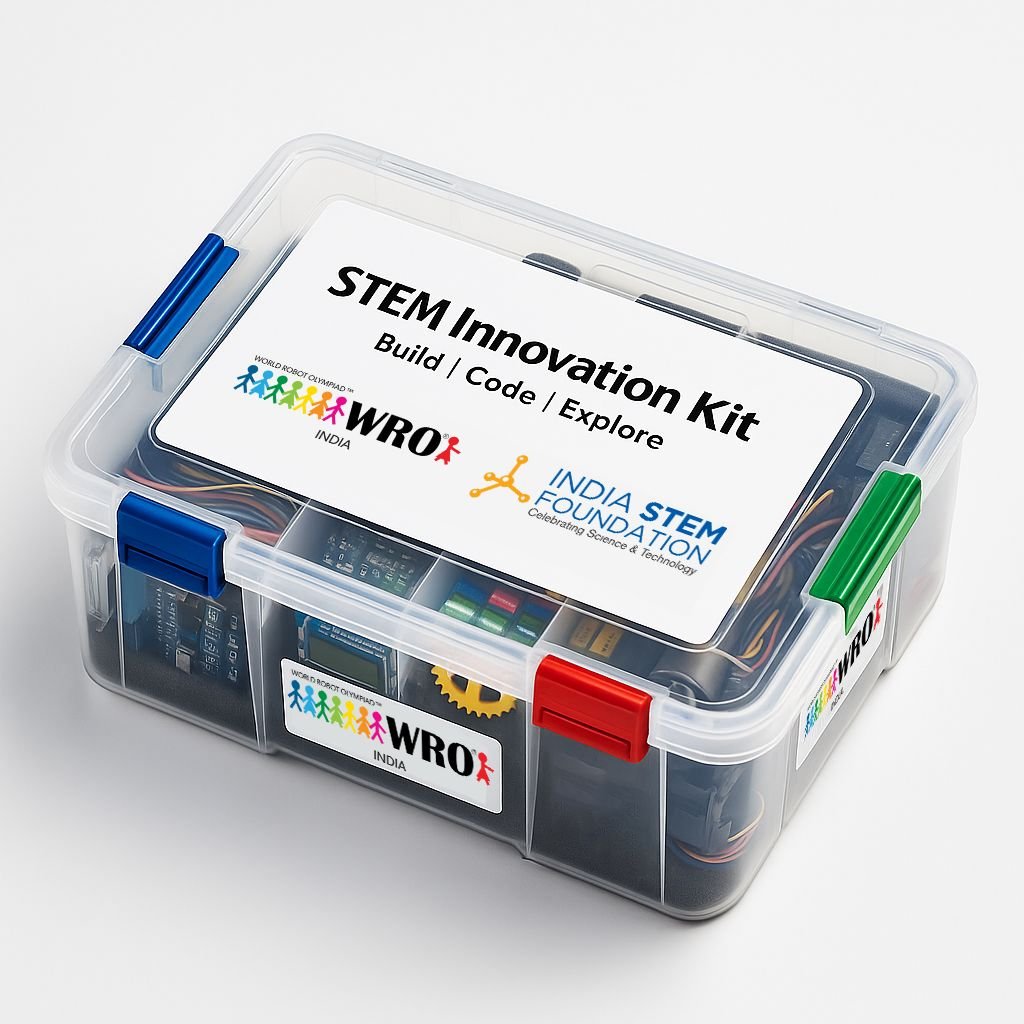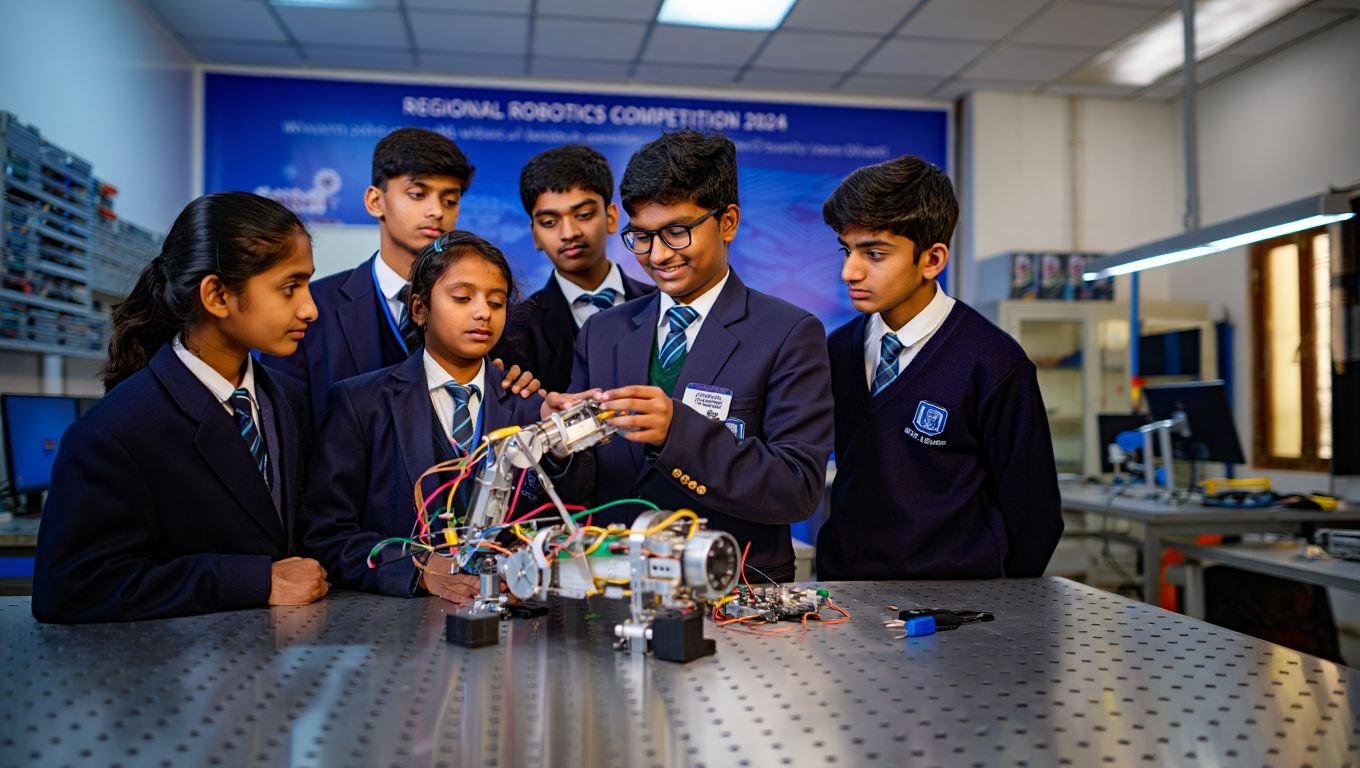In India, STEM education is essential for putting students on the fast track to success in the workforce. It develops creativity, critical thinking, and problem-solving abilities, giving students the tools they need to succeed in a labour market that is changing quickly. STEM promotes teamwork and creativity by fusing practical projects with real-world applications. All students will have access to these crucial sectors thanks to programs that prioritize diversity and inclusion. Initiatives to promote STEM education in India concentrate on curriculum development, teacher preparation, and infrastructure development. The value of STEM education in India is increasing as technology develops, helping to shape the future generation of engineers, scientists, and knowledgeable citizens.
Education has changed significantly in the last several years, especially in the field of STEM education. In order to motivate and pique students’ interest, educators are resorting to cutting-edge strategies like gamification, while traditional teaching methods frequently fail to do so. Gamification is a novel approach to making difficult STEM subjects more approachable and pleasurable by introducing aspects of games, such as competition, challenges, and prizes, into the learning process. Gamification has the power to change how students engage with science and technology while also improving learning outcomes by fusing the principles of play with instruction. Due to this expanding tendency, STEM courses are now more engaging than ever and provide new opportunities for long-term retention and active participation.
Gamification of Education
To engage users and improve their experience, gamification is the practice of incorporating game mechanics and design elements—like points, badges, leaderboards, and rewards—into non-gaming environments. Gamification in education refers to the process of incorporating these game-like elements into STEM educational tasks IN INDIA, with the goal of inspiring students, encouraging engagement, and creating a more pleasurable learning environment. The intention is to use the intrinsic appeal of games—competition, teamwork, and accomplishment—to promote deeper engagement with learning materials, which will improve understanding and retention.
For instance, science and math issues can be organized as quests that students must complete to get points. Platforms that let students create their own games or advance through progressively challenging tasks, collecting incentives, and unlocking levels gamify the study of coding. Likewise, real-time simulations of scientific investigations through virtual labs enable students to test hypotheses through interactive means. This method divides complex, daunting STEM subjects into doable, interesting projects. It promotes experimentation and discovery, which are essential in disciplines like technology and engineering. Students study at their own pace and are motivated to keep going forward with the help of instant feedback and visual progress tracking.
Gamification, in short, turns traditional education into a fun learning process by making STEM education in India more participatory and engaging for students. This helps them comprehend and recall difficult material.
Challenges Faced in Traditional STEM Education
Engagement: Conventional teaching approaches in STEM education in India frequently fall short of sparking students’ interest in India. pupils find it difficult to see the practical application of STEM courses due to rote learning, textbooks, and lectures, which can cause disengagement, particularly in younger pupils.
Complexity: STEM fields, by nature, are complicated, including physics, engineering, and mathematics. The abstract nature of these subjects in Indian STEM education can be daunting for students, making it difficult for them to understand and apply important ideas.
Retention: A traditional emphasis on memorization rather than real-world application and experience leads to a low level of knowledge retention. Deeper comprehension and practical application of STEM subjects are hindered in India by students’ frequent inability to remember and apply topics outside of tests.
Addressing these challenges is crucial to improving STEM education in India, and innovative approaches like gamification can significantly enhance student engagement and learning outcomes.
Psychological and Motivational Benefits of Gamification
Enhanced Motivation: The introduction of gamification features, such as competition and enjoyment, can greatly increase student motivation. Students in STEM education in India are more motivated to learn and become more involved when incentives, challenges, and levels are included.
Enhanced Engagement: STEM disciplines are more enticing because of the participatory nature of gamified learning. Instant feedback, leaderboards, and badges are just a few of the game features that keep students actively engaged and lower the likelihood of boredom and disengagement.
Enhanced Self-Efficacy: Gamification frequently includes tracking progress and small victories, which boost students’ self-esteem. Students’ self-efficacy and confidence in their ability to succeed in STEM disciplines rise as they overcome obstacles and receive rewards.
Encouragement of Persistence: The gamified approach frequently incorporates aspects that motivate students to persevere in the face of hurdles, such as recurring challenges and retries. This cultivates a growth mentality and resilience, two qualities necessary for taking on challenging STEM tasks.
Stress Reduction: Learning might be less daunting in this game-like setting. Gamification lowers anxiety related to challenging STEM subjects by presenting obstacles in a lighthearted way, resulting in a more enjoyable and stress-free learning environment.
All things considered, the use of gamification in STEM education in India not only raises motivation and engagement levels but also cultivates a positive and encouraging learning atmosphere that can result in improved academic performance and a greater interest in STEM disciplines.
Important Gamification Techniques for STEM Education
Virtual labs and interactive simulations: these resources let students conduct experiments and work through issues in a virtual setting. They improve memory and comprehension of STEM topics by modeling real-world situations, which is important for STEM education in India.
Educational Games and Apps: STEM education are made more fun with platforms that are designed to be played, like coding challenges or arithmetic puzzles. These games encourage students to advance and master abilities by offering levels, points, and awards; this supports STEM education in Indian and worldwide contexts.
Gamified Learning Platforms: Resources like Duolingo and Khan Academy include gamification features into their courses, such as leaderboards and badges. These online resources motivate Indian students enrolled in STEM programs to finish assignments and monitor their development in math, science, and engineering.
Role-playing and scenario-based learning: In these methods, students assume roles or work through issues in fictitious scenarios, such as scientists conducting tests or engineers working on projects. This tactic improves problem-solving abilities and interest in STEM education by putting STEM knowledge to use in real-world situations.
Through the use of immersive, interactive, and rewarding experiences, these gamification techniques increase the effectiveness and engagement of STEM education in India.
In conclusion, STEM education is essential in India to give students the skills they need for a workforce that is changing quickly. It helps pupils become more creative, critical thinkers, and problem solvers, preparing them for problems in the future. Nevertheless, there are frequently problems with engagement, complexity, and retention in traditional STEM education in India. These issues are addressed by gamification, which makes challenging STEM courses more approachable and entertaining by fusing gaming features like points, badges, and challenges into the educational process. This method lessens stress and encourages perseverance while increasing student motivation, engagement, and self-efficacy. Gamification is revolutionizing STEM education in India as a result of technological advancements, increasing the effectiveness and interactivity of instruction while educating students for professions as scientists, engineers, and knowledgeable citizens.




